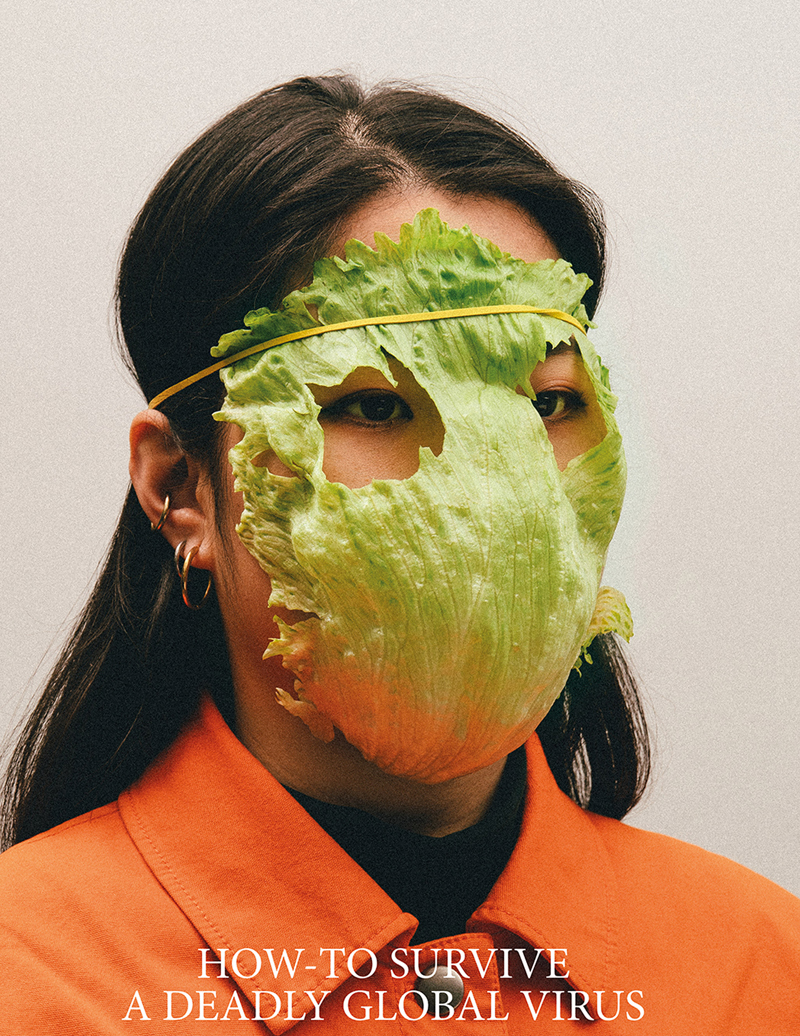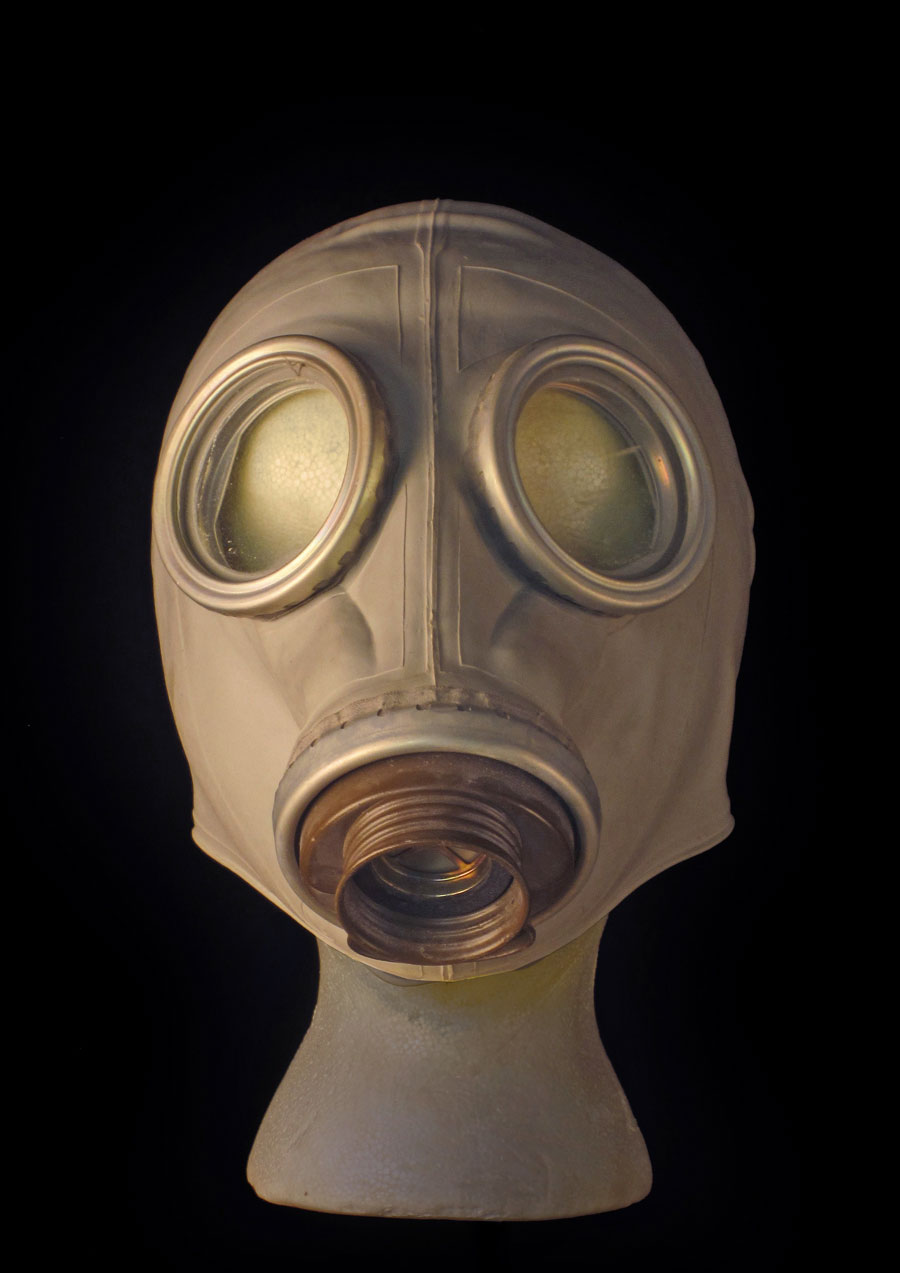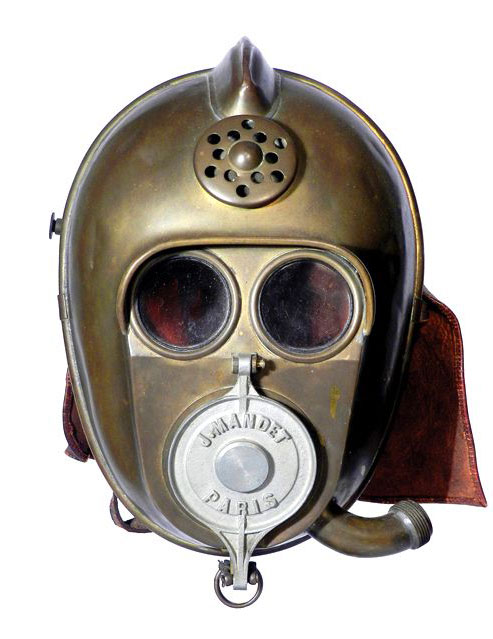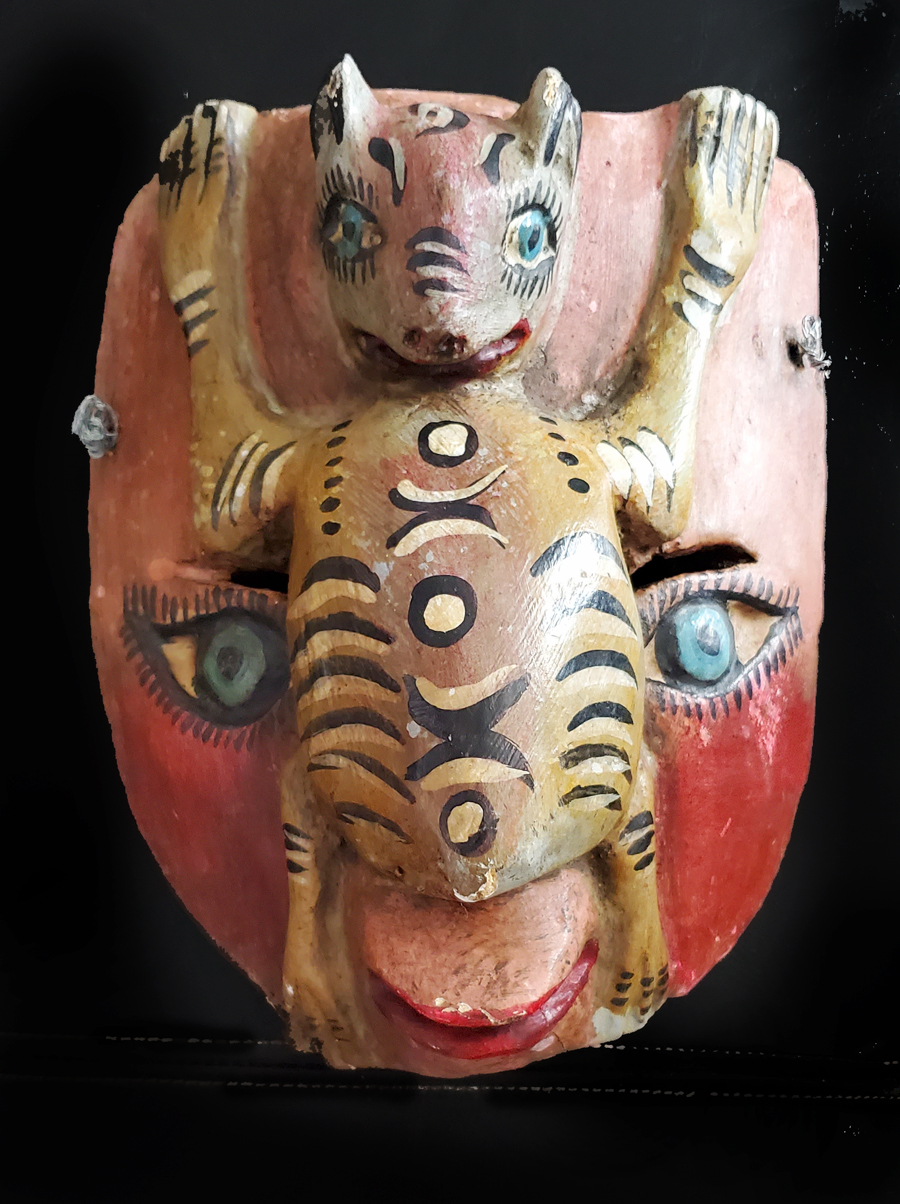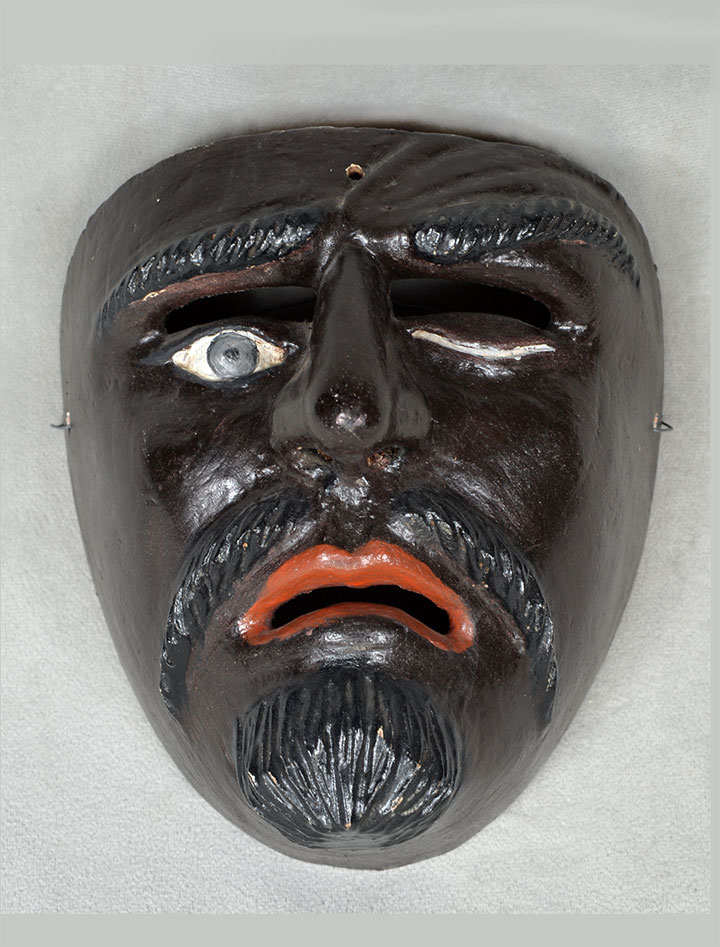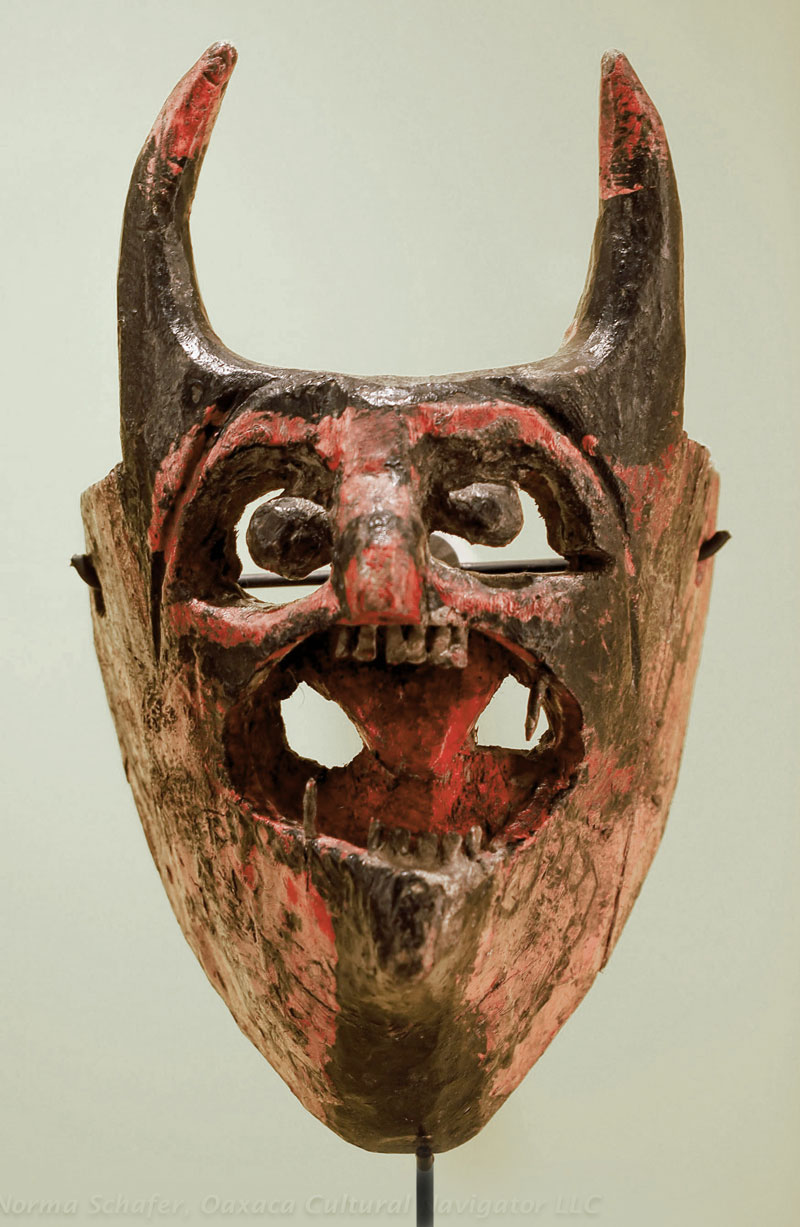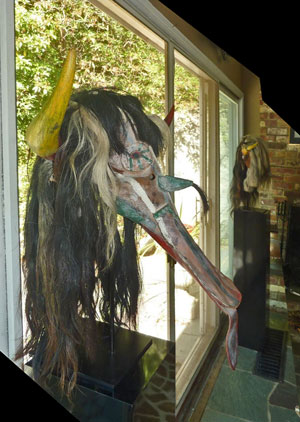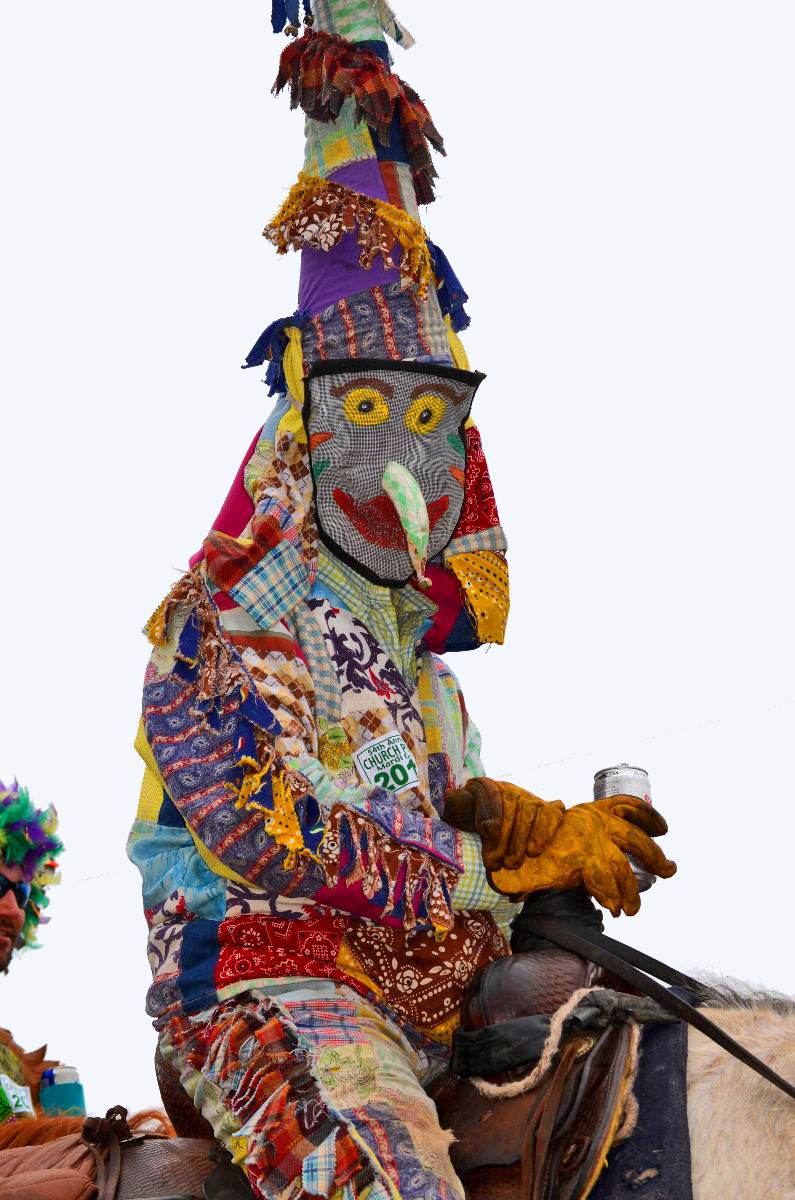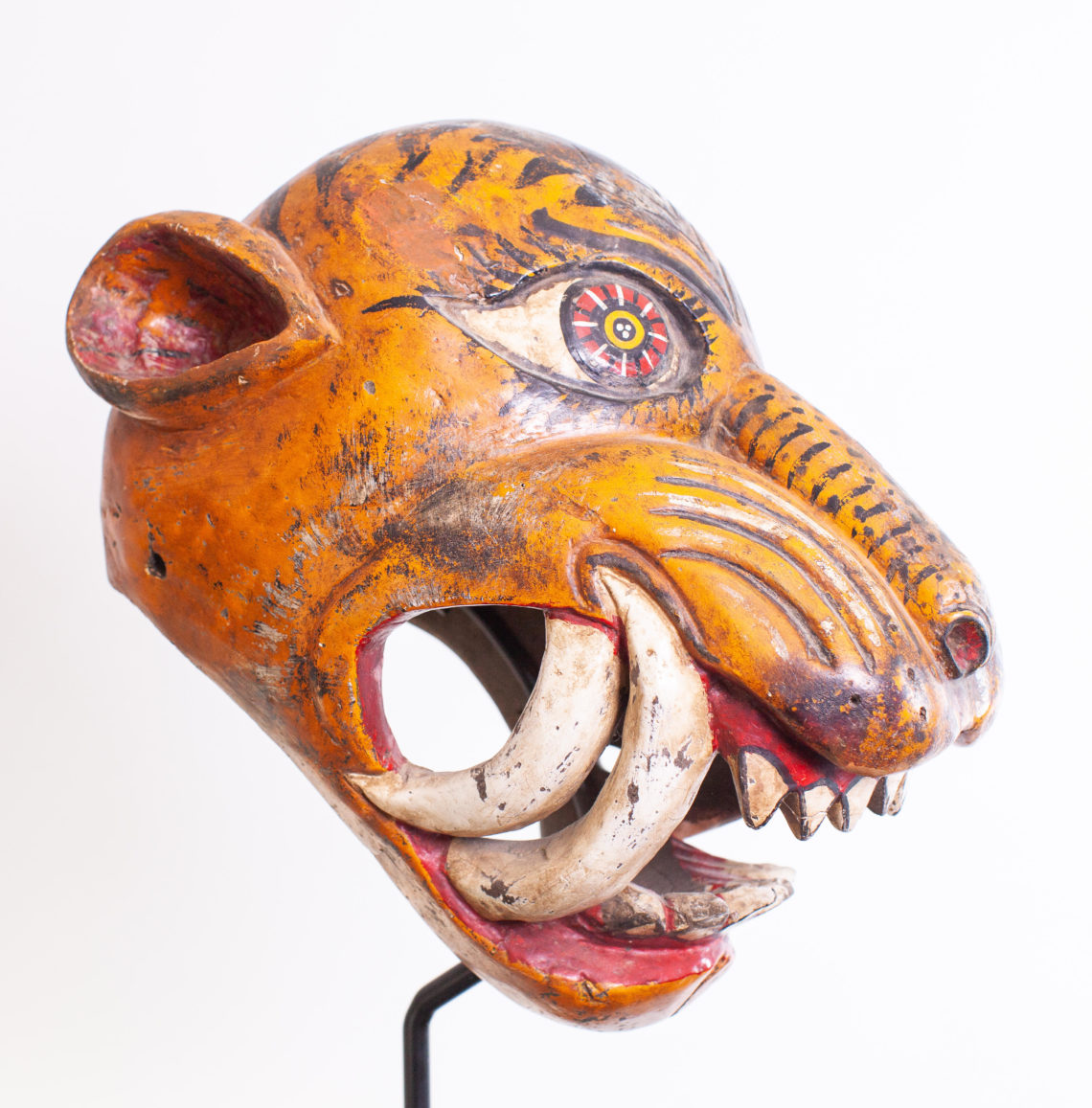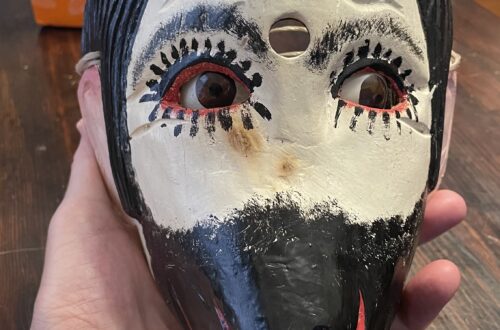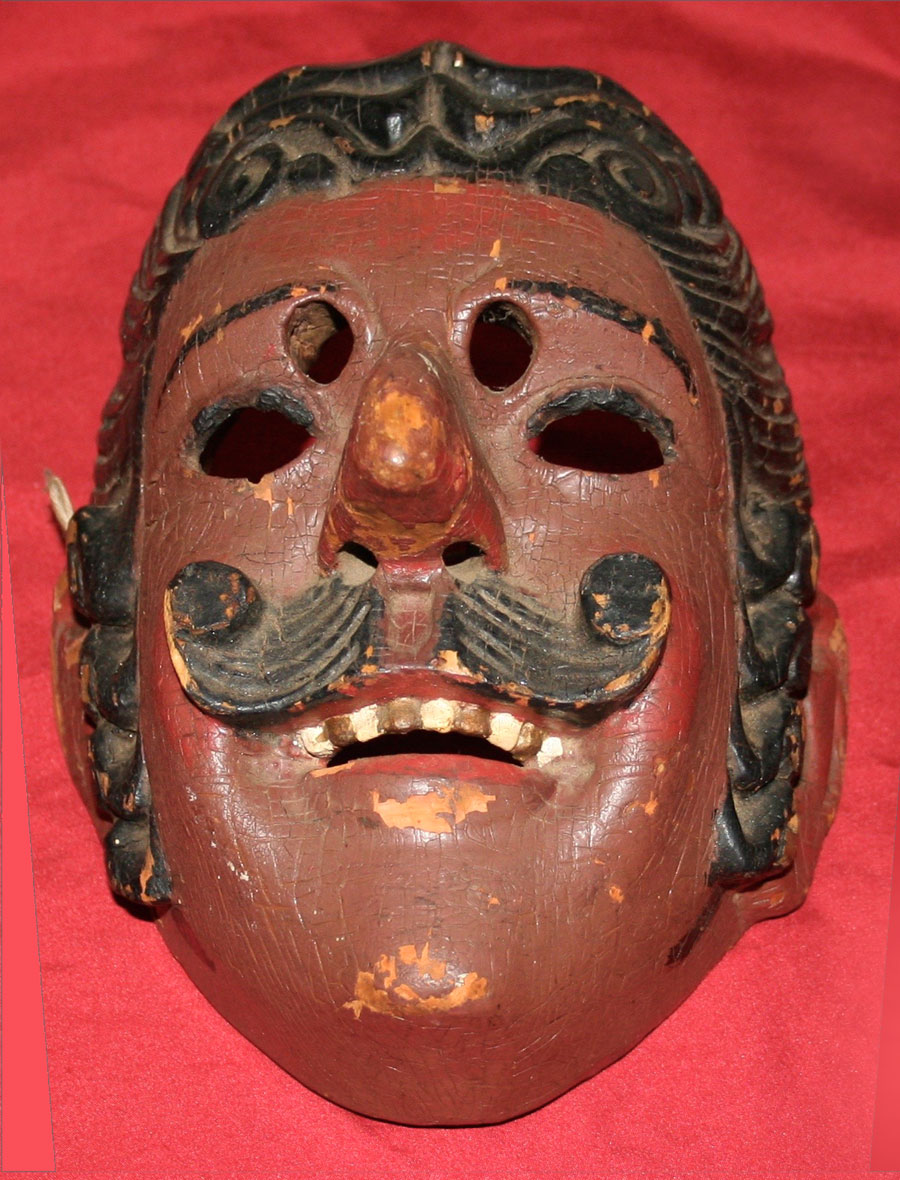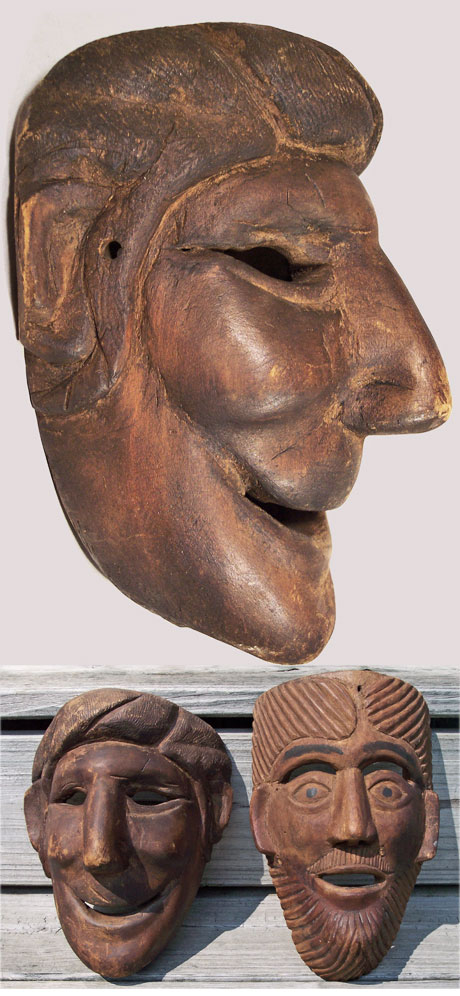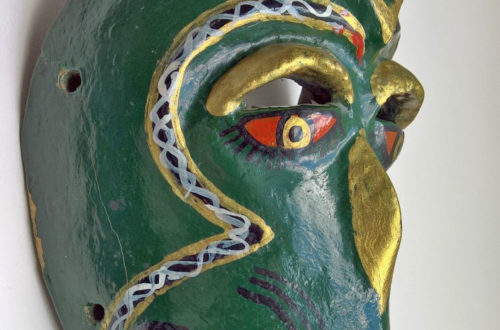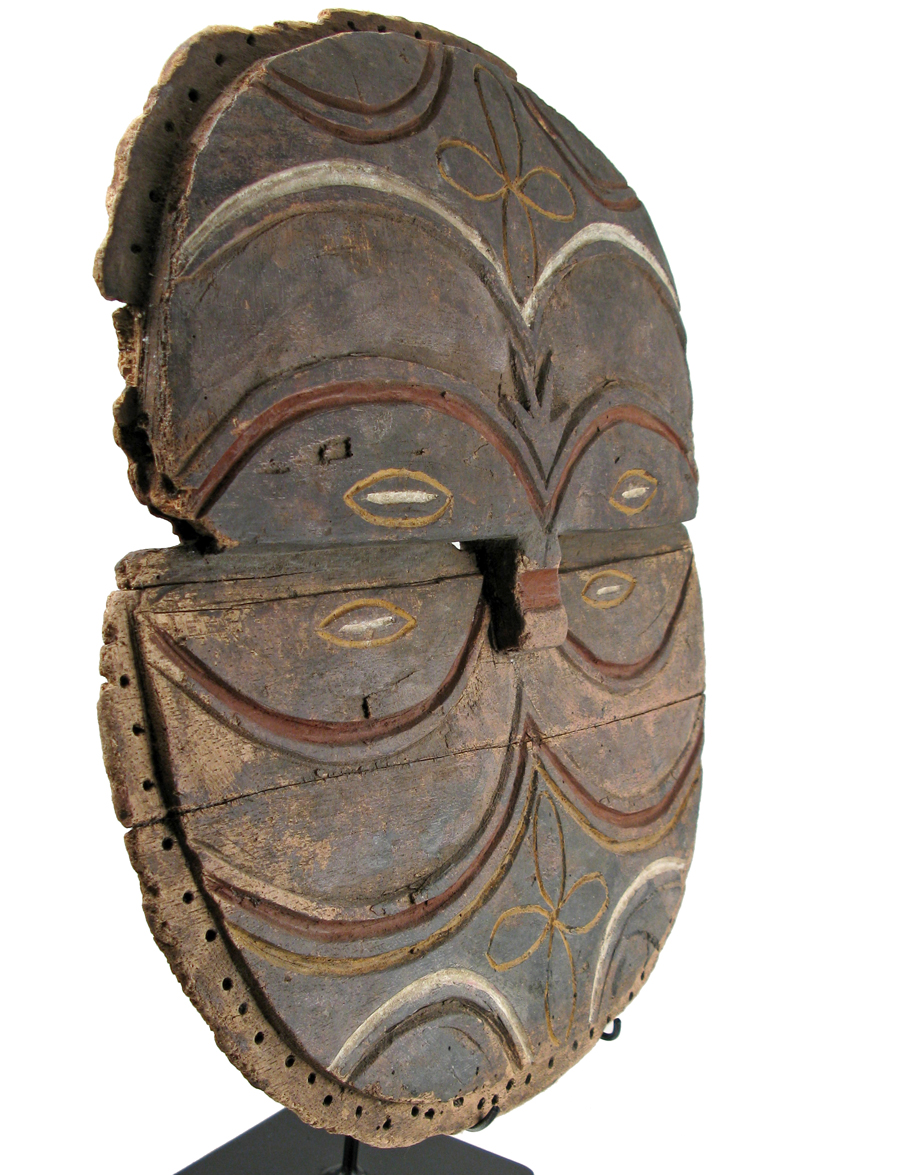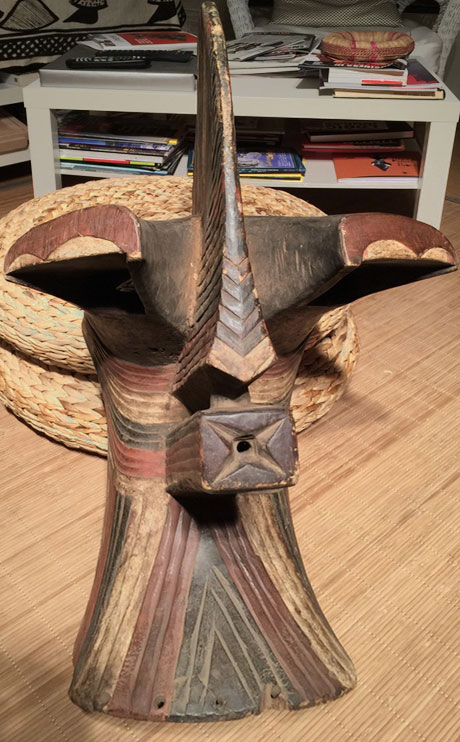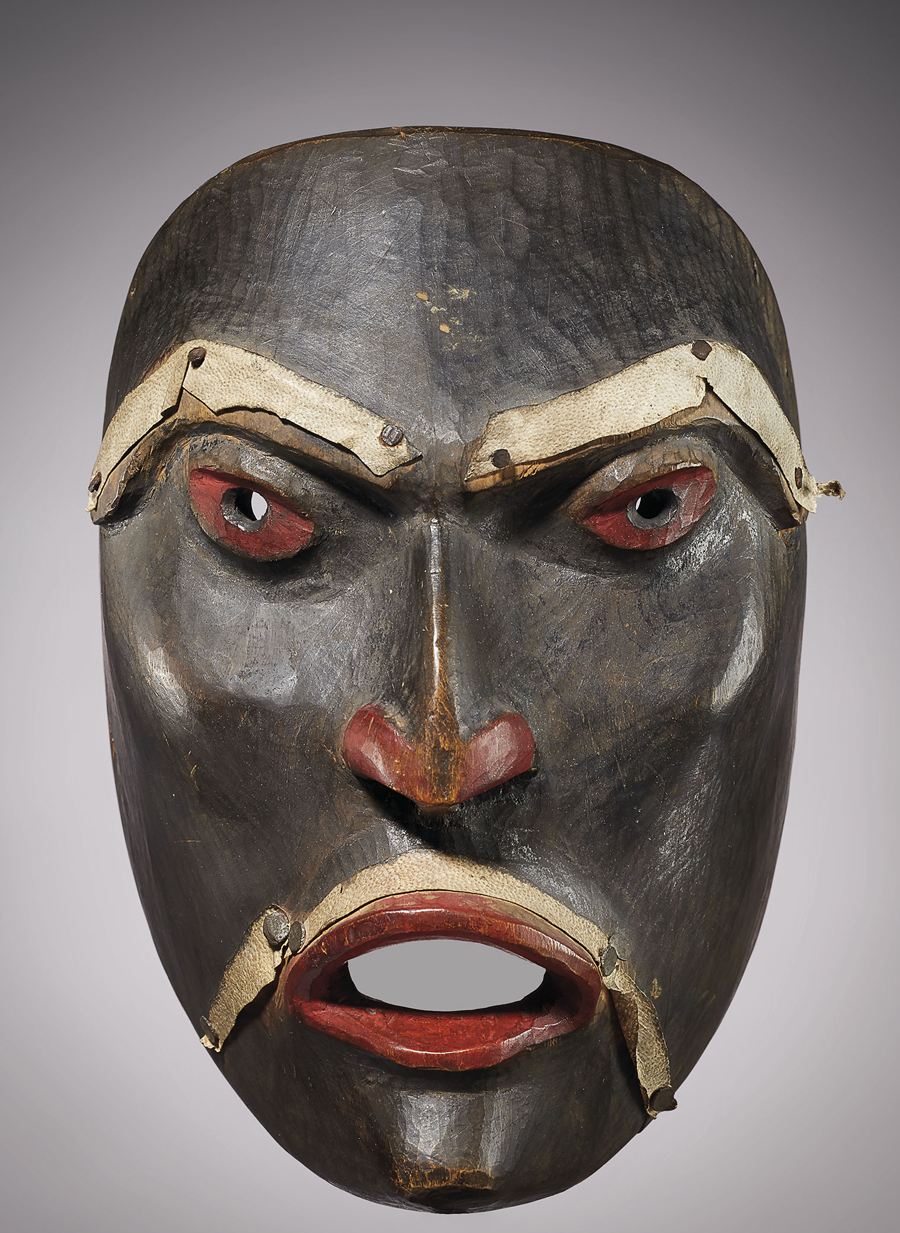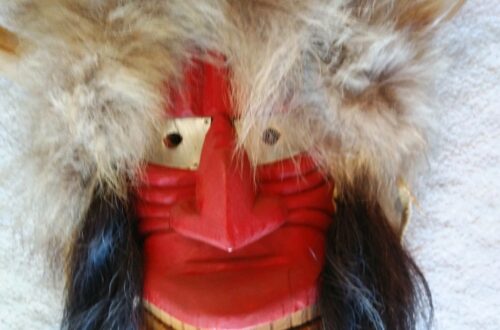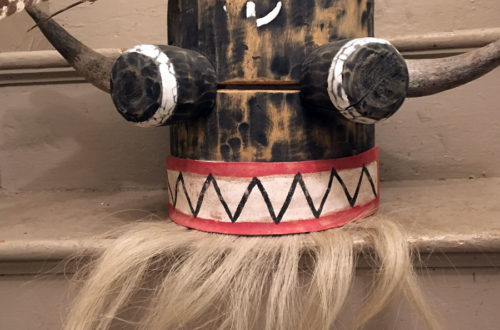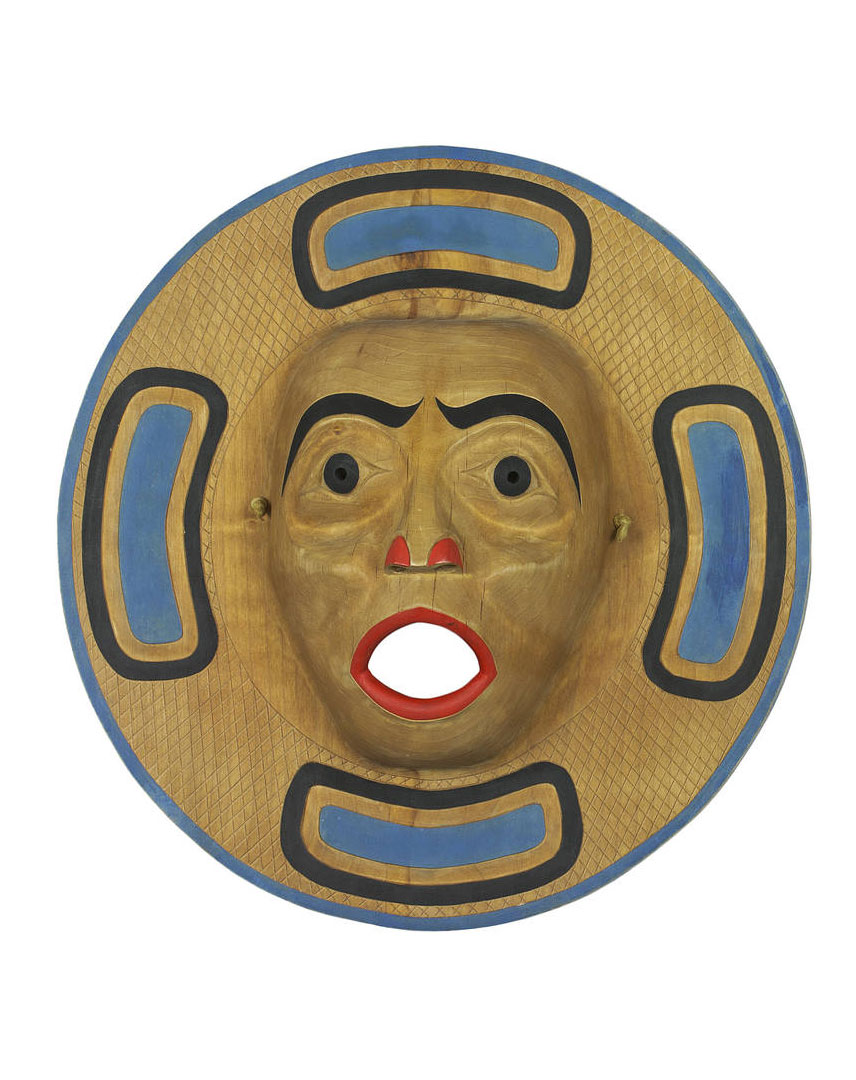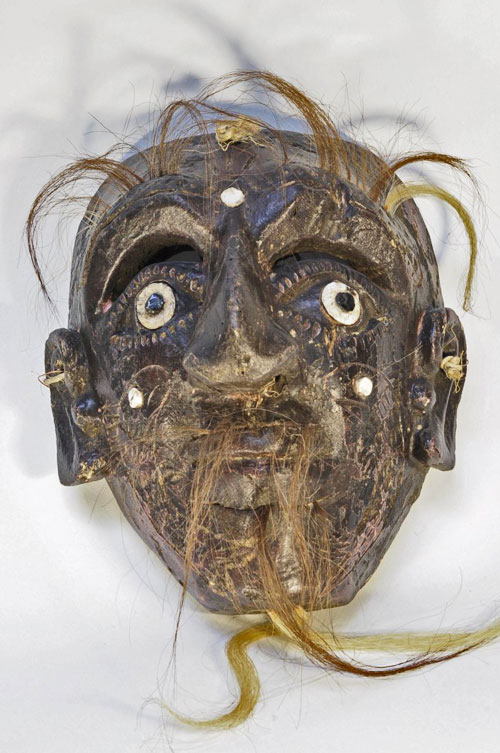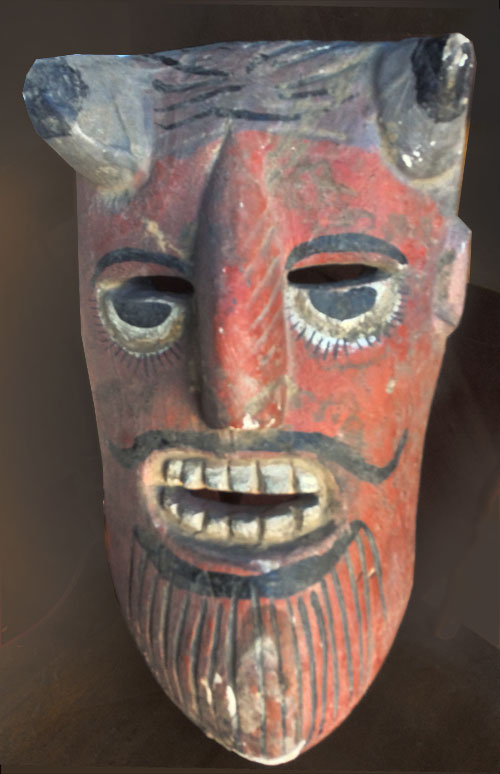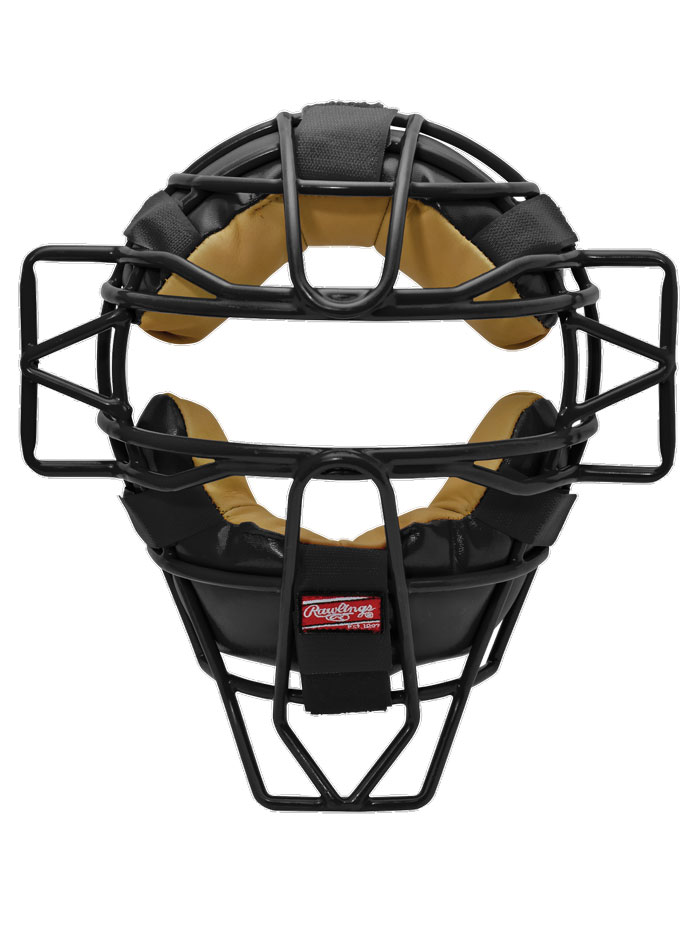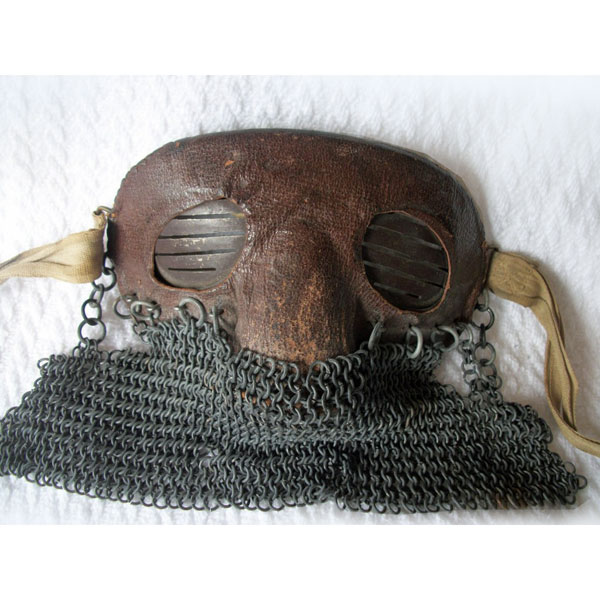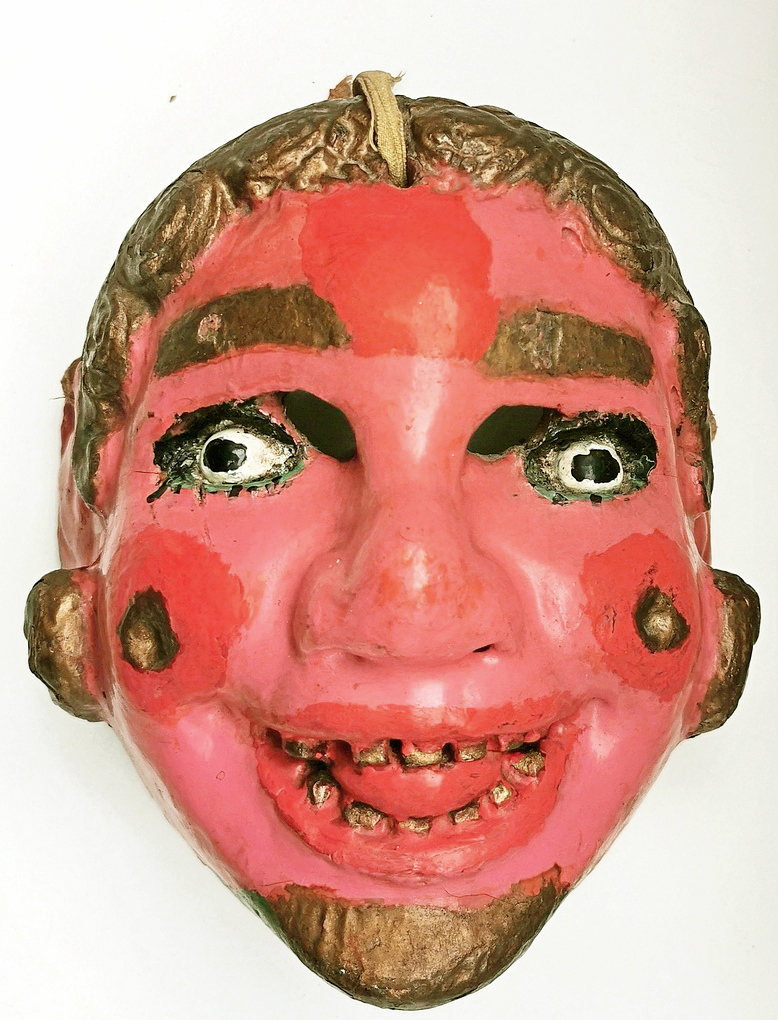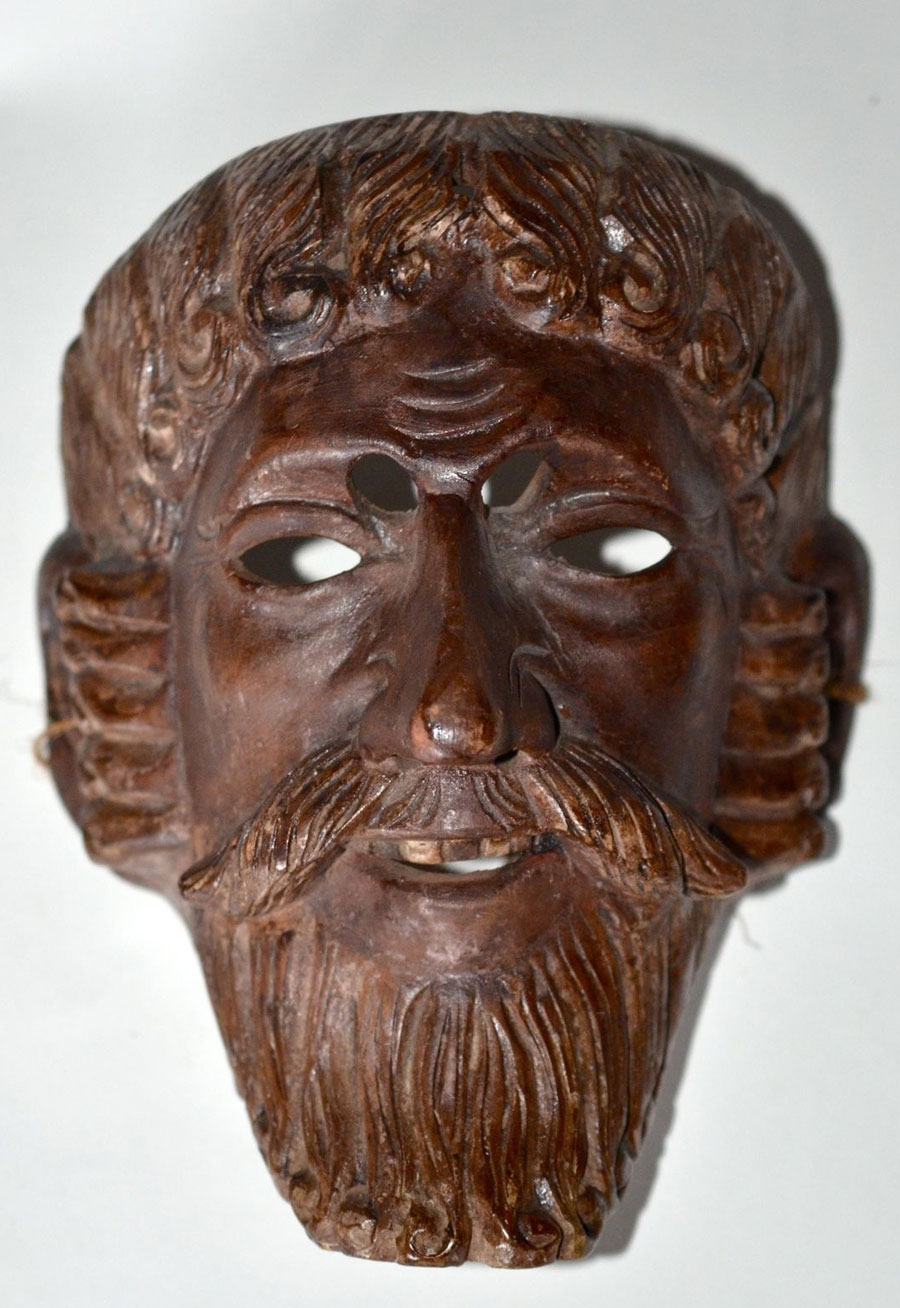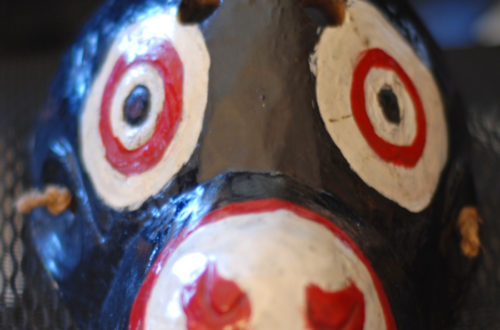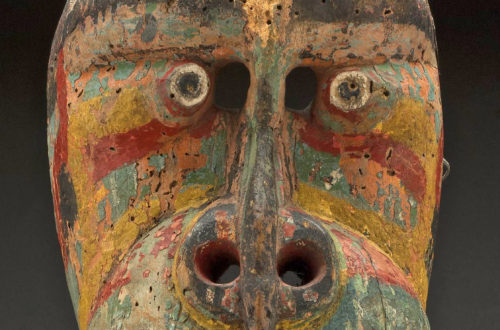How could anything be funny about the coronavirus? However, I did get a laugh when I went to dezeen.com and saw these, plus several more, all by the photographer, Max Siedendopf. I now hope to return to answering questions about what I enjoy most… tribal masks. But people are not sending in pictures to The Mask Man like they used to. Why? Now that I can’t go anywhere and must stay in my house, I find masks even more interesting! Why don’t other people? Bob, 1690
-
-
Tourist mask from Guerrero
Q: I found this mask and thought it was cool. Would love to learn more about it and its meaning. I do know it was made in Mexico. Any information would be appreciated. Chrystle, 1688 A: Tons of these cute masks with animals on their face are sold to tourists in Chilapa, Guerrero. They are also available in the gift shops and markets throughout the rest of the country. Most often the animal is a bat placed over the nose with its wings spread out. Many years ago these crazy looking masks were actually worn by villagers in the Danza de los Murcielagos. I saw one of those old bat…
-
Bryan Stevens, 1944-2020
It was about 40 years ago that I bought my first mask (Mexican) at a flea market. A few years later I met Bryan who lived in the neighboring town of York, PA, and he really got me excited about collecting. Though he was a psychiatrist by profession, he curated one of the most important Mexican mask collections in the world. He was always generous with his time and taught me a great deal about the folk art and anthropology of Mexico. He was also kind enough to write the preface to “Masks of the World,” a book written by me and Troy Yohn in 2015. I will greatly miss…
-
Guatemalan tigre mask
G: My father recently passed away and we are working through the various items at his estate. He was a big collector. He has 12 masks that I would like help appraising so that we can determine our next steps. I haven’t found any paperwork on this mask. Our dad kept records and usually did research on most items in his collection of over 800 items. Jodie, 1687 A: The jaguar is usually called El Tigre in Mesoamerica (Southern Mexico to Northern Panama). These yellow-with-black-dots (sometimes stripes) masks help represent El Tigre as a character in several different dances featuring animals. This is an excellent example of one area’s style.…
-
Authentic new Guatemalan masks
Q: Attached are two views of mask made by Moises Lopez, Tactic, Guatemala, and one of his unfinished masks. I like unfinished mask and will purchase them if I can convince the mask maker to give one up before it is painted. I also have some masks that were purchased in Ecuador, Peru, Guatemala, and most are from Mexico. Some are gifts, some bought from make, some are tourist, some not. Janet Brody Esser confirmed Michoacan masks, but no estimate of value. What would it cost to appraise them? Jeri, 1686 A: The book “Masks of the World” describes in detail how authenticity affects the value of masks. Most valuable…
-
Round Teke mask from Africa
Wikipedia has this to say: The Teke people, or Bateke also known as the Tyo or Tio, are a Bantu Central African ethnic group that speak the Teke languages. Its population is situated mainly in the Democratic Republic of the Congo and the Republic of the Congo, with a minority in Gabon. The economy of the Teke is mainly based on farming maize, millet and tobacco, but the Teke are also hunters, skilled fishermen and traders. The Teke sometimes chose blacksmiths as chiefs. The blacksmiths were important in the community and this occupation was passed down from father to son. In terms of life of the Teke, the village chief…
-
Tsimshian spirit mask of the upper air
Q: What I stumbled on while going down a Tumblr rabbit hole was that it is a Tsimshian mask representing the spirit of Upper Air. Supposedly from BC, Canada (19th C.). Hans, 1684 A: Christie’s auctioned this mask last year for over half a million dollars. Obviously it is a very desirable artifact. I did see a similar Tlingit singing shaman’s mask somewhere. The Tsimshian and Tlingit cultures are situated next to each other in Southeast Alaska. There is plenty about their folk art in libraries and the Internet. Enjoy. A+
-
Mexican black Devil mask
Q: Here’s another interesting Mexican devil mask to share with your followers. I purchased it online in 2018 for approx $60. Unfortunately the seller could offer very little detail regarding which state in Mexico it was from. The wooden portion of the mask is approx 8″x 5″ with some type of animal skin (goat?) attached around the perimeter. It also has what appear to be goat fur mustache and eyebrows. The teeth and fangs are applied wood. He is a very menacing, yet dapper looking fellow. Dan, 1683 A: Dan is a very experienced collector, but even the smartest guys can occasionally be stumped. All I can do is confirm…
-
N 99 face mask
I suspect that many people will find this blog unpleasant. Please forgive me. I have been trying to post all kinds of masks from around the world for 20 years… not just for cultural reasons, but for protection, pleasure, power, art, etc. There are well over 2000 different types of masks in the archives of MasksoftheWorld.com. This huge reference work must continue to be all-encompassing and up to date. Now we add its first anti-contagion cloth mask. I had to do it. Bob, 1682
-
Smiling Gracejo mask from Guatemala
Q: In these uncertain times, if you wish to show a sympathetic item, here is one. This smiling mask from Guatemala is a Gracejo, which could be translated as a joker. Actually, it represents a young foolish “Cristiano” in the dance “Baile Moros y Cristianos” also named “Baile Rey Tardecindo” in Alta Verapaz (area of Cobán). Typical feature is the tongue passing between teeth. Here the eyes are made of nuts, I guess acorns. The mask is extremely light in weight, the wood could be pine (probably pinabete– a typical pine of Mesoamerica). Also typical of Cobán area is the presence of a row of small holes in the lower…
